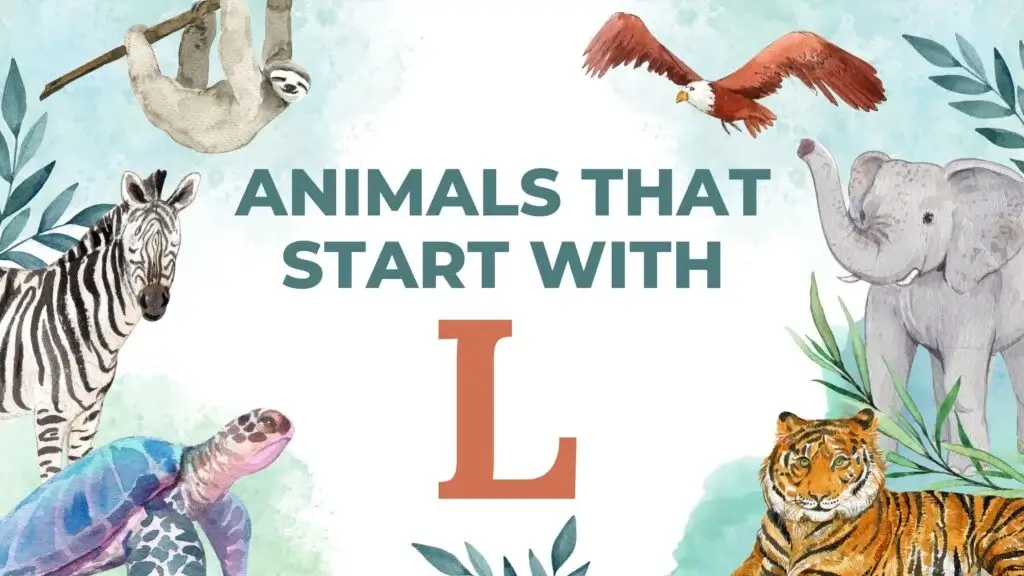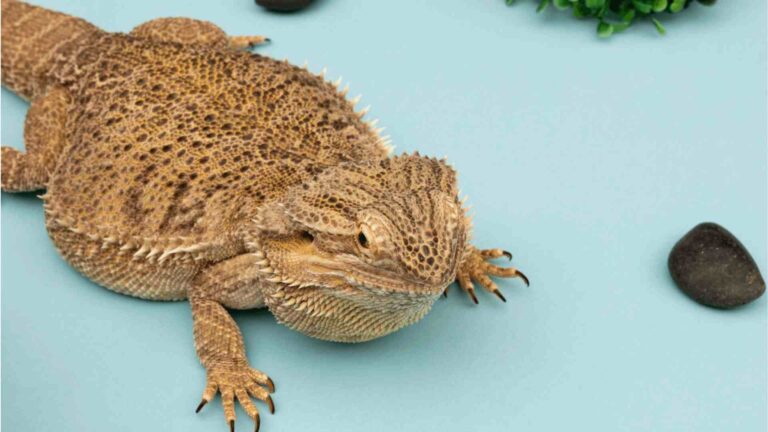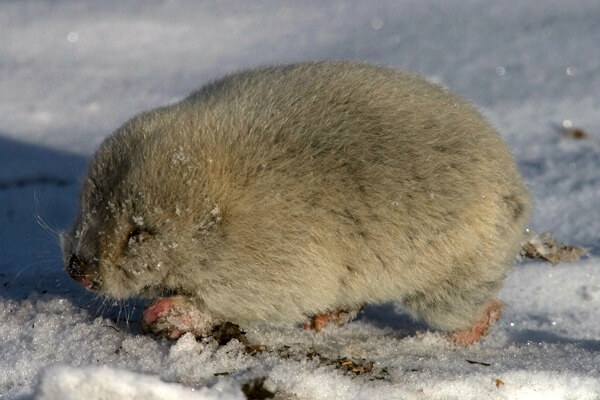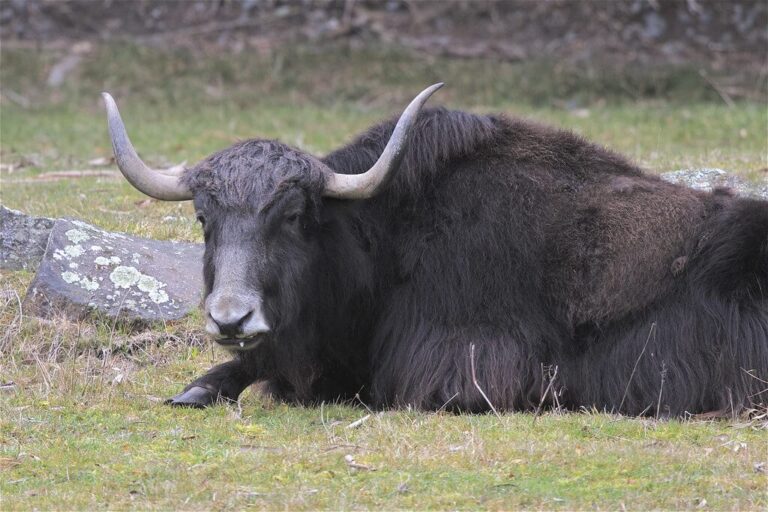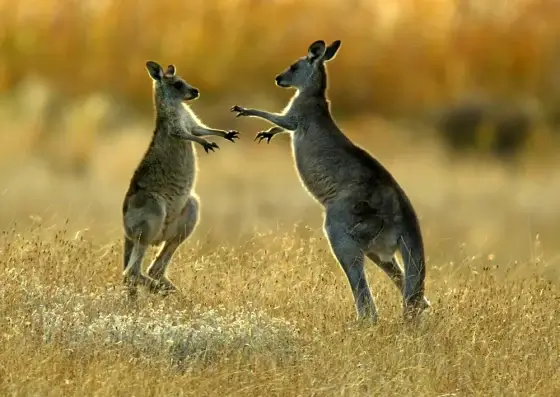Top Animals That Start with L: Exploring Wildlife from Land, Air, and Water
Animals have always captured our imagination; among them, many intriguing species start with the letter “L.” Whether it’s a mighty predator, a delicate creature of flight, or a lumbering herbivore, each animal plays a vital role in the balance of our ecosystems. This article dives deep into the fascinating world of animals whose names start with L, showcasing their unique characteristics, habitats, and significance in nature.
Contents
Alphabetical List Of Animals That Start With L

| Labahoula | Leafcutter Bee | Lipstick Albino Boa |
| Labmaraner | Least Flycatcher | Little Brown Bat |
| Labout’s Fairy Wrasse | Leatherback Sea Turtle | Little Penguin |
| Labrabull | Leech | Livyatan |
| Labradane | Leedsichthys | Lizard |
| Labradoodle | Leghorn Chicken | Lizardfish |
| Labrador Retriever | Leichhardt’s Grasshopper | Llama |
| Labraheeler | Lemming | Loach |
| Labrottie | Lemon Blast Ball Python | Lobster |
| Lace Bug | Lemon Cuckoo Bumblebee | Locust |
| Lace Monitor | Lemon Shark | Loggerhead Shrike |
| Ladybug | Lemur | Lone Star Tick |
| Ladyfish | Leonberger | Long-Eared Owl |
| Lagotto Romagnolo | Leopard | Long-Haired Rottweiler |
| Lake Sturgeon | Leopard Cat | Long-Tailed Tit |
| Lake Trout | Leopard Frog | Long-Winged Kite Spider |
| Lakeland Terrier | Leopard Gecko | Longfin Mako Shark |
| LaMancha Goat | Leopard Lizard | Longnose Gar |
| Lamprey | Leopard Seal | Lorikeet |
| Lancashire Heeler | Leopard Shark | Loris |
| Lancetfish | Leopard Tortoise | Lowchen |
| Landrace Pig | Leptocephalus | Lumpfish |
| Landseer Newfoundland | Lesser Jacana | Luna Moth |
| Lappet-faced Vulture | Lesser Scaup | Luna Moth Caterpillar |
| Lapponian Herder | Lhasa Apso | Lungfish |
| Larder Beetle | Lhasapoo | Lurcher |
| Large Munsterlander | Liger | Lykoi Cat |
| Largemouth Bass | Limpet | Lynx |
| Laughing Kookaburra | Lineback Cattle | Lyrebird |
| Lavender Albino Ball Python | Linnet | Lystrosaurus |
| Lawnmower Blenny | Lion | La Plata Dolphin |
| Lazarus Lizard | Lion’s Mane Jellyfish | Lincoln Sheep |
| Leaf-Tailed Gecko | Lionfish | Lapwing |
| Leafcutter Ant | Liopleurodon | Lunkarya Guinea Pig |
The Power of Nature’s Diversity: Why Animals That Start with “L” Matter
Each species has a story, a function, and an irreplaceable role in the world. From Leopards prowling the savannas to Lemurs leaping through Madagascar’s forests, these animals contribute to the rich diversity of our planet. They may seem diverse, but these animals share common threads in adapting to their environments and their ability to thrive despite challenges.
This guide will take you through 10 famous animals that start with “L,” explaining their behaviors, environments, and traits while offering insights into what makes them stand out. Whether you’re a nature enthusiast, a parent teaching your kids about wildlife, or simply curious, you’ll find something fascinating about these creatures.
More animals that start with: A | B | C | D | E | F | G | H | I | J | K | L | M | N | O | P | Q | R | S | T | U | V | W | X | Y | Z
Top 10 Animals That Start With L | animals beginning with l
1. Leopard

- Scientific Name: Panthera pardus
- Habitat: Forests, grasslands, and savannas of Africa and Asia
The Leopard is one of the most iconic big cats in the world, known for its spotted coat and incredible strength. Leopards are nocturnal predators, skilled in stalking their prey and dragging their kills into trees to avoid scavengers. These solitary creatures are remarkable for their adaptability, living in various environments, from tropical rainforests to deserts. Despite being mighty hunters, leopards face habitat loss and are classified as vulnerable.
2. Lion

- Scientific Name: Panthera Leo
- Habitat: African savannas and grasslands
Known as the “King of the Jungle,” the Lion is one of the most recognized animals, starting with L. Lions live in pride, making them unique among the big cats for their social structure. They are top predators, hunting in coordinated groups, primarily targeting large herbivores like zebras and buffaloes. Sadly, lion populations are declining due to habitat destruction and poaching, leading to increased conservation efforts to protect them.
3. Lemur
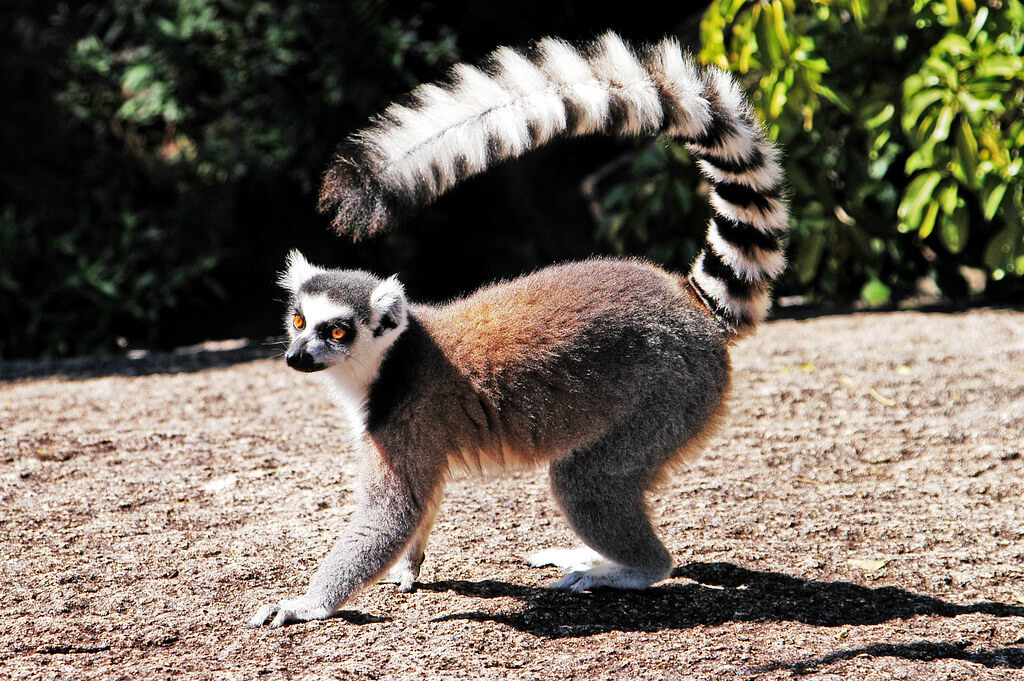
- Scientific Name: Lemur catta
- Habitat: Madagascar’s forests and drylands
Found exclusively in Madagascar, Lemurs are primates famous for their long tails, expressive faces, and energetic behavior. The most well-known species, the Ring-tailed Lemur, is highly social and spends much time on the ground compared to other lemur species. Lemurs are vital to their ecosystem as seed dispersers but face deforestation and illegal hunting threats.
4. Llama
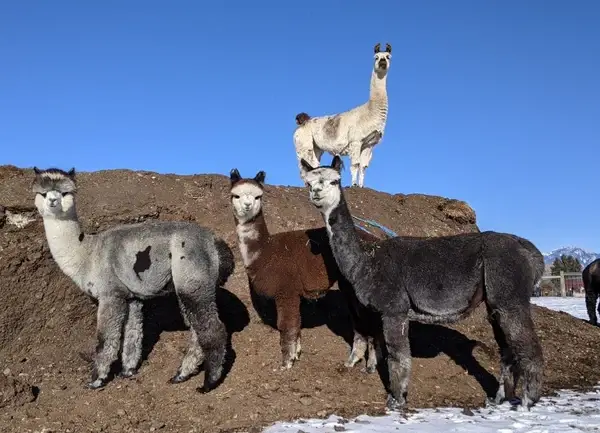
- Scientific Name: Lama Glama
- Habitat: Andes Mountains of South America
Llamas are domesticated animals used by Andean cultures for thousands of years as pack animals and for their wool. These herbivores are closely related to camels but lack the signature humps. Llamas are known for their gentle temperament and ability to thrive in harsh mountain climates. They play a significant role in local economies and are prevalent in petting zoos worldwide.
5. Lobster

- Scientific Name: Nephropidae
- Habitat: Coastal waters around the world, particularly the Atlantic Ocean
The Lobster is a marine crustacean prized for its sweet, succulent meat. Living on the ocean floor, lobsters are nocturnal and typically hide in crevices during the day. Lobsters are considered both predators and scavengers, feeding on fish, mollusks, and dead marine life. Their economic importance has led to overfishing concerns, prompting sustainable fishing efforts worldwide.
6. Lynx

- Scientific Name: Lynx lynx
- Habitat: Boreal forests of North America, Europe, and Asia
The Lynx is a solitary, elusive cat with distinctive tufted ears and a short tail. Found in dense forests, this predator is known for its stealth and hunting prowess. The Eurasian Lynx is the largest species and primarily preys on small mammals, particularly rabbits and hares. Conservation efforts are crucial for the survival of this species as habitat loss continues to threaten its populations.
7. Ladybug

- Scientific Name: Coccinellidae
- Habitat: Gardens, forests, and grasslands worldwide
The Ladybug, also known as the ladybird beetle, is a tiny insect recognized for its bright red shell and black spots. These beetles are beneficial for gardeners as they consume harmful pests like aphids. Ladybugs have become a symbol of good luck in many cultures. Despite their small size, their role in pest control is immense, benefiting both agricultural practices and ecosystems.
8. Leatherback Sea Turtle
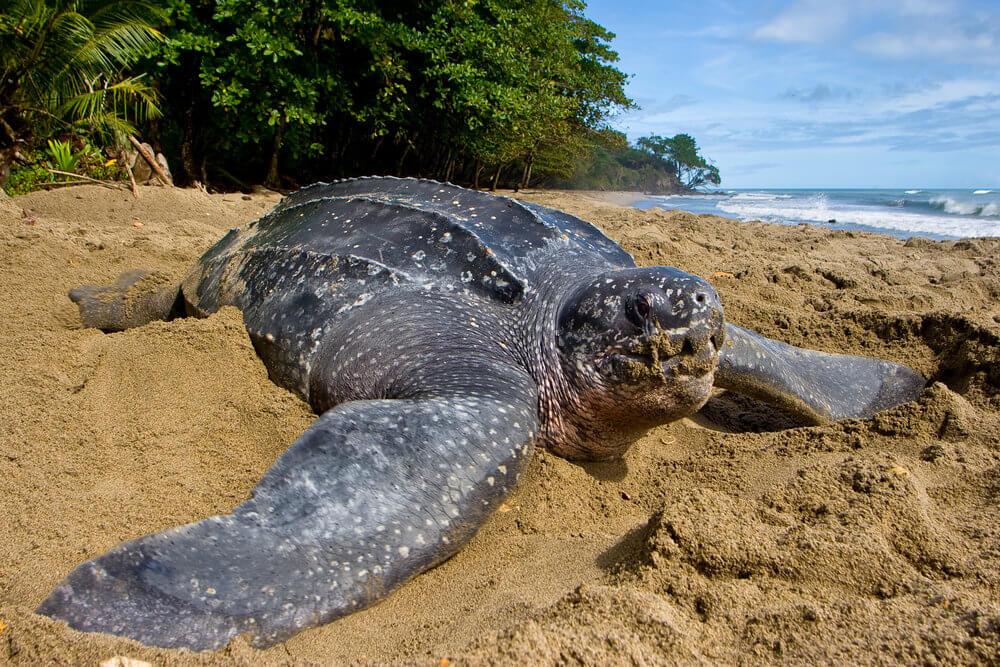
- Scientific Name: Dermochelys coriacea
- Habitat: Open oceans, tropical and subtropical seas
The Leatherback Sea Turtle is the largest, up to 7 feet long. Unlike other turtles, the leatherback’s shell is leathery and flexible, allowing it to dive to incredible depths in search of jellyfish. Unfortunately, these majestic creatures face numerous threats, including plastic pollution, climate change, and illegal poaching. Conservation efforts are critical to preserving their populations.
9. Lemur Leaf Frog
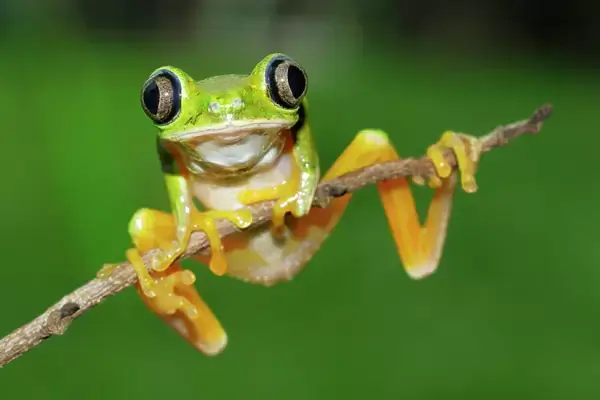
- Scientific Name: Agalychnis lemur
- Habitat: Central and South American rainforests
The Lemur Leaf Frog is a small, vibrant amphibian that gets its name from its lemur-like eyes. It is found in the tropical rainforests of Costa Rica, Panama, and Colombia. These frogs are nocturnal and spend their days hiding in leaves. Unfortunately, Lemur Leaf Frogs are critically endangered due to habitat destruction and disease, highlighting the need for more excellent conservation initiatives.
10. Long-Eared Owl

- Scientific Name: Asio otus
- Habitat: Forests and woodlands across Europe, Asia, and North America
The Long-Eared Owl is a medium-sized owl recognized for its tall, ear-like tufts. These nocturnal birds of prey are skilled hunters with excellent night vision and sharp talons for capturing small mammals like rodents. They are well-adapted to cold climates, and during winter, they often gather in communal roosts for warmth. Despite being widespread, these owls face threats from habitat loss and human disturbances.
Conclusion
From the nimble Lemur to the majestic Lion, animals that start with L showcase the incredible diversity and adaptability of life on Earth. These creatures provide beauty and intrigue and play critical roles in their ecosystems. As we learn more about them, it becomes evident that protecting their habitats is essential for the planet’s health. Whether you’re drawn to the regal Leopard or the hardworking Lobster, every one of these animals deserves our admiration and conservation efforts.
Related Posts:
- Animals That Start With A
- Animals That Start With B
- Animals That Start With C
- Animals That Start With D
- Animals That Start With E
- Animals That Start With F
- Animals That Start With G
- Animals That Start With H
- Are Rottweilers Good With Kids? Reasons & Training Tips - 17 September 2025
- How Long Are Dogs Pregnant: Complete Guide - 16 September 2025
- German Shepherd Doberman Mix: Info, Pictures, Care & More - 11 September 2025

